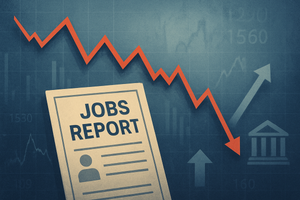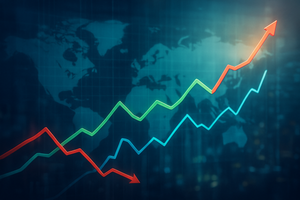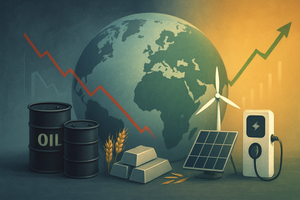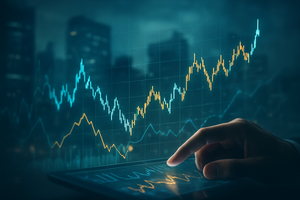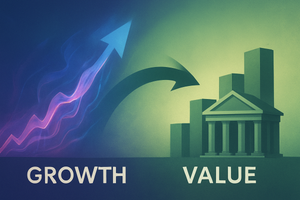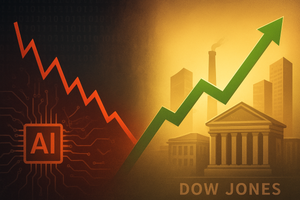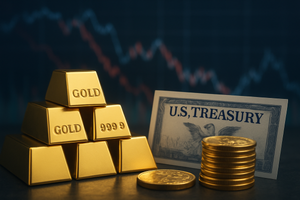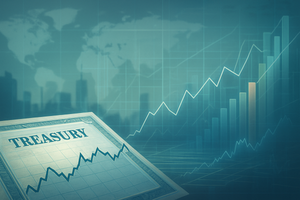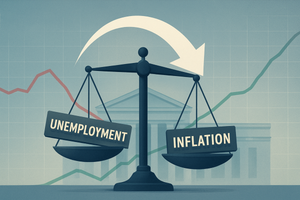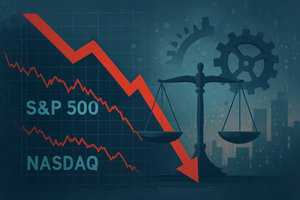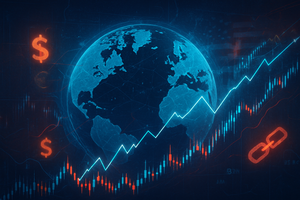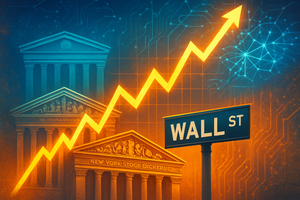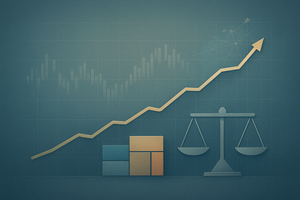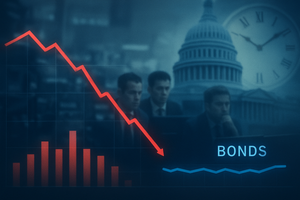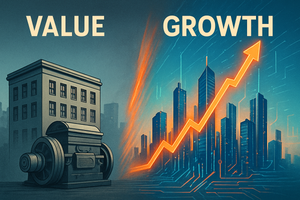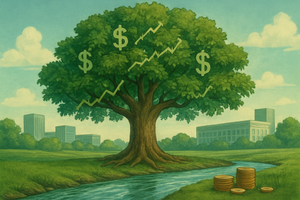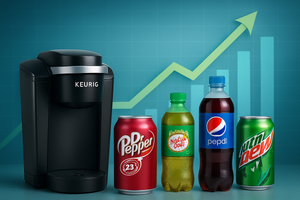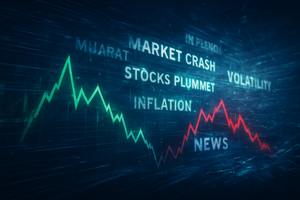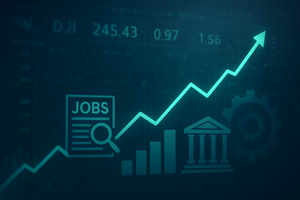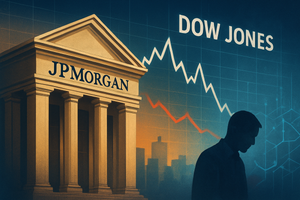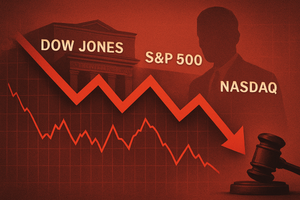US Stock Market Holds Breath: Jobs Report Looms, Interest Rate Future Hangs in BalanceThe United States stock market is currently navigating a period of heightened uncertainty and wavering sentiment as investors eagerly await a series of crucial economic reports, most notably the November jobs report. As of mid-December 2025, this anticipation is driving significant volatility, reflecting a delicate balance between a cooling labor
Navigating the Currents: Dow, S&P 500, and Nasdaq Chart Divergent CoursesThe opening of a recent trading week saw a familiar yet complex narrative unfold across Wall Street's major benchmarks, with the Dow Jones Industrial Average, S&P 500, and Nasdaq Composite exhibiting a notably mixed performance. This divergence underscores a market grappling with a confluence of economic signals, shifting investor
Global Economy Braces for Slowdown: A Seismic Shift for Commodity MarketsThe global economy is entering a period of pronounced deceleration, a trend largely driven by persistent inflation and the aggressive monetary tightening policies adopted by major central banks worldwide. As of December 15, 2025, forecasts from leading institutions like the International Monetary Fund (IMF), World Bank, and OECD consistently point
Downy and USA Hockey Announce Partnership By Sending One Lucky Fan To The Olympic and Paralympic Winter Games Milano Cortina 2026
Downy, the laundry care brand from Procter & Gamble, is celebrating its new partnership with USA Hockey by launching a sweepstakes offering a once-in-a-lifetime trip: two tickets to the Winter Olympics to cheer on the U.S. Men's Ice Hockey Team on February 14, 2026. Fans can enter* for their chance to win from now until January 2, 2026, at DownyRinseSweepstakes.com/OlympicWinterGames.
Navigating the Tempest: Strategies for Investors in a Choppy 2025 Stock MarketThe global stock market is currently experiencing a period of heightened volatility and significant choppiness as of December 12, 2025, presenting a complex landscape for investors. This instability is largely driven by a confluence of evolving monetary policy, persistent inflationary pressures, anxieties surrounding the technological sector, and broader geopolitical uncertainties.
The Great Rotation: Are Value Stocks Finally Poised for a Resurgent Comeback in a Shifting Market?As 2025 draws to a close, the financial markets are witnessing a profound recalibration, with a discernible shift in investor preference away from the high-flying growth stocks that have dominated for years. This "Great Rotation" is increasingly favoring value stocks, signaling a potential long-awaited comeback for companies trading at lower
Dow Jones Defies Tech Turmoil: A "Great Rotation" Reshapes Market LandscapeAs of December 12, 2025, the financial markets are witnessing a striking divergence: the venerable Dow Jones Industrial Average (DJIA) continues its ascent, notching new all-time highs, even as the once-unassailable technology sector grapples with significant volatility and investor skepticism. This "Great Rotation" of capital from high-growth tech stocks to
Gold and Treasuries Soar Amidst Market Jitters: A Deep Dive into Investor CautionThe financial markets are currently witnessing an intriguing and somewhat counter-intuitive phenomenon: a significant surge in both gold prices and U.S. Treasuries. This dual rally, particularly the simultaneous rise of gold and falling Treasury yields (indicating rising bond prices), signals a profound shift in investor sentiment, driven by a
Bond Market Watch: Treasury Yields Fluctuate, Signaling Potential Shifts in Investment StrategiesThe U.S. Treasury market is currently experiencing significant yield fluctuations, particularly on the longer end of the curve, hinting at potential recalibrations in investment strategies for both fixed income and equity participants. As of December 12, 2025, a complex interplay of Federal Reserve policy, robust economic data, and global
Federal Reserve's Dovish Signal? Unemployment Fears Outweigh Inflation Concerns, Paving Way for Rate CutsFederal Reserve Bank of Philadelphia President Anna Paulson has sent a clear signal to markets, indicating a potential shift in the central bank's priorities. Speaking on December 12, 2025, Paulson expressed a growing concern for the U.S. labor market, stating she is "on the margin still more worried about
S&P 500 and Nasdaq's Tech Troubles: Navigating the Slump Amidst Market RebalancingAs of December 2025, the financial markets are grappling with a significant shift, as the S&P 500 and Nasdaq Composite indices experience heightened volatility driven by a pronounced tech stock correction and ongoing market rebalancing efforts. This period of adjustment, while a natural part of market cycles, presents immediate
Fed's Dovish Pivot Ignites Markets: Rate Cut and Liquidity Injections Fueling OptimismWashington D.C. – December 11, 2025 – The Federal Reserve delivered a significant shift in its monetary policy this week, embracing a decidedly less hawkish stance that has immediately reverberated through global financial markets. On December 10, 2025, the Federal Open Market Committee (FOMC) announced its third consecutive interest rate cut,
Global Crosscurrents Challenge US Equities: Fed Easing Amidst Geopolitical Volatility and Inflationary HeadwindsThe U.S. stock market finds itself at a critical juncture, navigating a complex web of global economic trends and geopolitical events that are shaping investor sentiment and corporate outlooks. As of December 11, 2025, a significant monetary policy shift by the Federal Reserve, coupled with persistent geopolitical tensions, ongoing
2 Dow Jones Stocks for Long-Term Investors and 1 We Find RiskyThe Dow Jones (^DJI) is home to corporate giants, but size alone doesn’t guarantee success.
A few of these companies are struggling with weak fundamentals, paradigm shifts, or poor execution.
US Stock Market Rides High: Fed Rate Cut Fuels Optimism as Indices Eye Record PeaksNew York, NY – December 10, 2025 – The U.S. stock market is currently experiencing a robust rally, with major indices positioned tantalizingly close to their all-time highs. This bullish sentiment, culminating in a significant surge on December 10, 2025, is largely propelled by the Federal Reserve's recent interest rate cut
Vanguard's 2026 Outlook: A Decade of Modest Returns for U.S. Stocks Amidst AI ExuberanceValley Forge, PA – December 10, 2025 – Vanguard, one of the world's largest investment management companies, has today released its much-anticipated "Vanguard Economic and Market Outlook 2026," painting a picture of significantly more modest returns for U.S. equities over the next decade. The outlook, which draws on the firm's proprietary
Market Holds Breath: Stocks Waver, Bonds Steady Ahead of Pivotal Fed AnnouncementAs of December 10, 2025, global financial markets are gripped by a palpable sense of anticipation, characterized by weakening stock performance and a relatively steady bond market, all eyes fixed on the impending Federal Reserve announcements. Investors are bracing for what is widely expected to be the year's final interest
Value Stocks Lag Growth in S&P 500: A Deep Dive into Market DynamicsDecember 9, 2025 - The financial markets are once again grappling with a familiar narrative: the persistent underperformance of value stocks relative to their growth counterparts within the S&P 500. As of December 9, 2025, while the broader market has seen stellar returns, a closer look reveals that the
Procter & Gamble Maintains Dividend King Status with Latest Payout DeclarationProcter & Gamble (
NYSE: PG), the consumer goods titan, recently solidified its reputation as a bedrock of investor returns by declaring its latest quarterly dividend. The announcement, which saw the company maintain its consistent payout, underscores P&G's robust financial health and unwavering commitment to shareholder value, offering a beacon of
Keurig Dr Pepper Bolsters Investor Confidence with Latest Quarterly Dividend DeclarationKeurig Dr Pepper (
NASDAQ: KDP) announced today, December 9, 2025, that its Board of Directors has declared a regular quarterly cash dividend of $0.23 per share of common stock. This move underscores the company's commitment to returning value to shareholders and signals robust financial health amidst a dynamic consumer
Navigating the Tides: Strategic Investing Ahead of Major Economic AnnouncementsIn the dynamic world of financial markets, major economic announcements serve as pivotal junctures, capable of triggering significant shifts in asset valuations and investor sentiment. From central bank interest rate decisions to crucial inflation reports and gross domestic product (GDP) figures, these data releases often dictate the market's immediate trajectory
Navigating the Storm: How Breaking News Dictates Market Swings and Investor FortunesIn today's hyper-connected financial world, breaking news acts as an immediate and powerful catalyst, sending ripple effects across global markets and causing swift, often dramatic, swings in stock prices. As of December 9, 2025, investors are increasingly accustomed to a landscape where a single headline, be it a corporate announcement,
Dow Shows Early Strength as Markets Brace for Crucial Economic SignalsAs Tuesday, December 9, 2025, dawns, the financial markets are abuzz with anticipation, with the Dow Jones Industrial Average (DJIA) showing an early uptick. Investors are keenly focused on two pivotal economic events set to unfold: the imminent release of key job openings data and the ongoing deliberations of the
JPMorgan's Cautious Outlook Rattles Dow Jones Amidst Strong PerformanceJPMorgan Chase & Co. (
NYSE: JPM), a titan of the financial industry and a significant component of the Dow Jones Industrial Average (DJIA), recently experienced a notable shift in market sentiment. Despite a year of robust financial performance characterized by surging earnings and revenue growth throughout 2024 and 2025, a cautious
Markets Brace for Federal Reserve's Crucial Verdict as Indices DipNew York, NY – December 8, 2025 – Major U.S. stock indices, including the Dow Jones Industrial Average, S&P 500, and Nasdaq Composite, registered declines today as investors adopted a cautious stance ahead of a pivotal Federal Reserve decision. The market's apprehension reflects deep uncertainty surrounding the central bank's next
